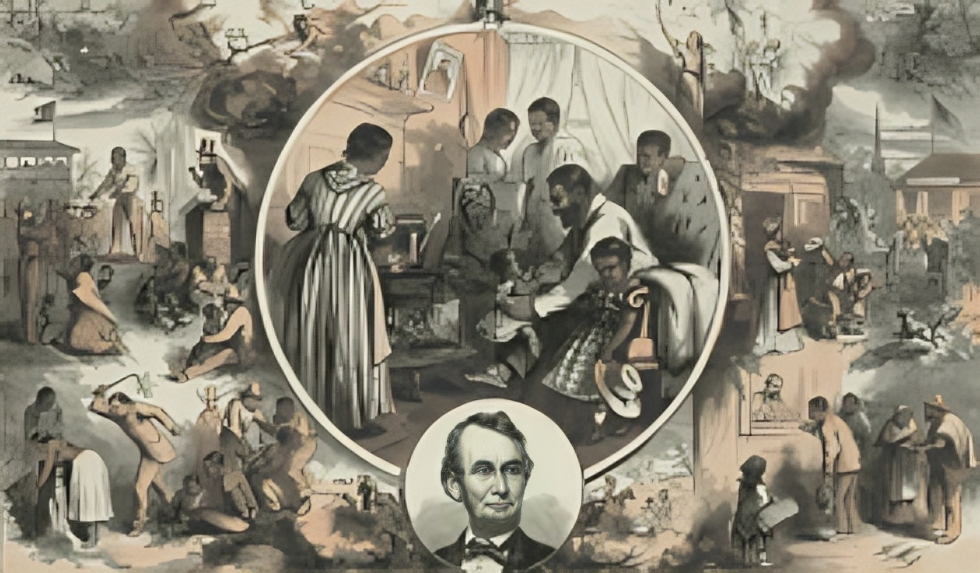
Soon after the election of Abraham Lincoln in 1860, Southern states began to secede from the Union. This led to civil war. After nearly a year and a half of war, President Lincoln called emancipation of slaves “a fit and necessary war measure.” His Emancipation Proclamation said, in part, that on January 1, 1863, “all persons held as slaves within any state or designated part of a state . . . in rebellion against the United States shall be then, thenceforward and forever free.” The proclamation also allowed the recruitment of African Americans into the United States military. More than 186,000 enlisted by the end of the war. It was actually the Thirteenth Amendment to the Constitution, ratified in December 1865, that ended slavery.
Thomas Nast was a prominent American cartoonist and illustrator, known for his impactful political and social commentary through his art. His work was influential during the 19th century, especially in shaping public opinion on key issues of the time.
The artwork you’re referring to, “The Emancipation of the Negros,” is a notable piece from January 1863. This work was created in the context of the American Civil War and the ongoing debate over slavery and emancipation.
Details of the Artwork:
- Title: “The Emancipation of the Negros, January 1863—The Past and the Future”
- Date: 1863
- Publisher: Philadelphia King & Baird
Content and Themes:
The illustration reflects Nast’s strong abolitionist stance and his support for the Union cause. The piece visually contrasts the past with the future, symbolizing the transition from slavery to freedom. It likely depicts the contrast between the horrors of slavery (the past) and the promise of a future where African Americans would enjoy freedom and equal rights (the future). Nast’s work often employed symbolism and allegory to convey his messages, and this piece would have been no exception.
Nast’s art was influential in shaping public perception, especially regarding the abolition of slavery. He was known for his ability to distill complex social and political issues into powerful visual statements. His cartoons were widely published and had a significant impact on the discourse surrounding the Civil War and Reconstruction.
In summary, Thomas Nast’s “The Emancipation of the Negros” is a significant piece reflecting his abolitionist beliefs and his role in advocating for social change through his art.